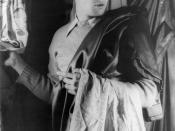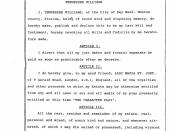"As he [Tennessee Williams] proclaims in one of his many essays, theatre becomes most potent "through the unlocking and lighting up and ventilation of the closets, attics, and basements of human behavior and experience." To accomplish this, he develops a dramatic form he describes as "personal lyricism", blending psychologically realistic characters with overtly poetic language and a heavy reliance on stage symbolism" (Adler). Authors constantly take everyday objects or certain actions and transform them into symbols of significant meaning and importance to the plot and overall effectiveness of a work. In the play A Streetcar Named Desire, written by Tennessee Williams, the use of symbols help the author portraying the messages they're trying to get across and are essential to the outcome of the play. Williams uses light, polka music and poker games as a few of the prominent symbols in A Streetcar. Light is most often used in plays to set the mood of a scene, and every so often the creator will take it to the next level and use it to convey a real message.
In the play, light is a continuous symbol of truth. From early on Blanche states, "I can't stand a naked bulb, any more than I can a rude remark or a vulgar action." (55 Williams). The paper lantern being placed over the bulb, dimming the light in Blanche's 'bedroom,' almost immediately after taking up residence in Stella and Stanley's home reflects her need to keep her past hidden from her sister and brother-in-law. Also Mitch being the one to put the lantern over the bulb is quite appropriate, Blanche sees Mitch as her chance to forget her previous indiscretions and start over. She avoids standing under direct light and refuses to see Mitch anywhere that's well lit (Sparknotes). As Blanche tells...


